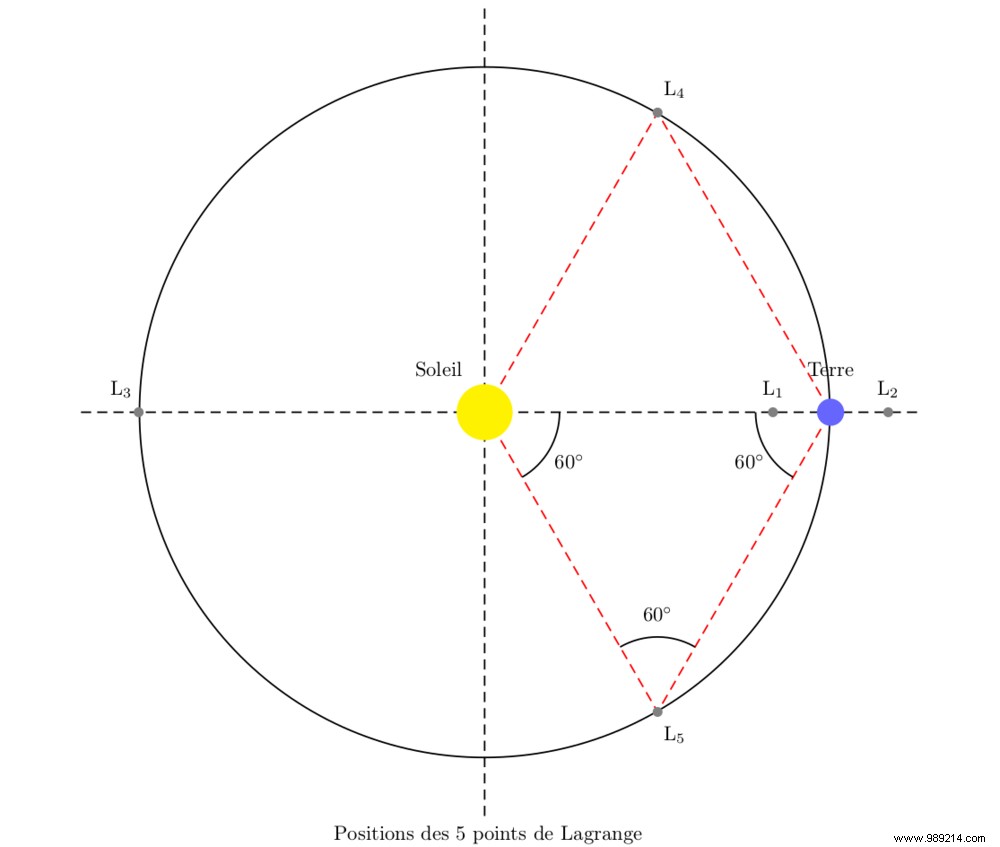The James Webb Telescope, scheduled for launch on December 25, 2021, will position itself on Lagrange Point 2 (L2), approximately 1.5 million kilometers from Earth. Two main reasons led researchers to set their sights on this "parking spot".
The James Webb Telescope, or JWT, is often referred to as the worthy successor to Hubble, which has entertained us for the past three decades. The observatory, whose development cost now exceeds ten billion dollars, is considerably larger, more complex and more powerful than its predecessor. It will also place itself much further away, at Lagrange Point 2 (L2).
A Lagrange point (denoted L1 to L5) is a position where the gravity fields of two bodies in orbital motion around each other provide the required centripetal force so that this point of space simultaneously accompanies the orbital movement of the two bodies. Three of these Lagrange points (L1, L2 and L3) are located on the axis connecting the two bodies, in this case the Sun and the Earth.
Point L2, the one that interests us today, is located about 1.5 million kilometers from Earth in the opposite direction to the Sun. The balance between the gravitational forces of the Sun and the Earth will allow the JWT to "park" maintaining the same relative position without expending much energy. However, this is not the only reason, as it will also keep him cool.

The JWT is optimized to probe the universe in infrared light (IR), long wavelengths that we feel as heat. To capture the weakest infrared signals, the scientific instruments of the observatory will have to remain at a temperature close to absolute zero. Concretely, the idea is therefore to eliminate any other form of heat so as not to interfere with the observations. These heat sources include the Sun, the Earth-Moon system or even the observatory itself.
So to keep out the heat, the JWT should deploy a sunshade about the size of a tennis court. The L2 position will allow the telescope to remain aligned with the Earth as it moves around the sun while protecting it from its heat.
If all goes according to plan, the telescope instruments will operate at around minus 225 degrees Celsius. During this time, temperatures on the "hot side" (where the solar panels and communications antenna, among other things, are located) will hover around 88°C. “The temperature difference between the hot and cold sides of the telescope is enormous:you could almost boil water on the hot side and freeze nitrogen on the cold side! “, indeed underlines NASA.
After launch, it will take about thirty days to reach its destination. Once installed in orbit around L2, the telescope will begin an observation campaign after about six months, the time to test all its instruments. From then on, the observatory will focus on the first stars and galaxies in the universe and will probe the composition of several extraterrestrial atmospheres in search of possible signs of life, among many other tasks.